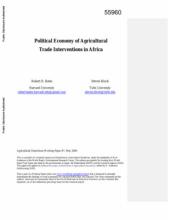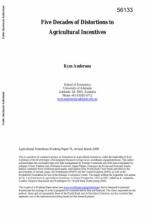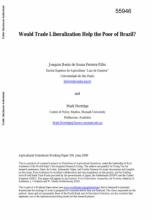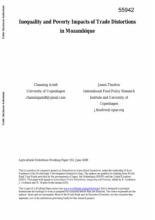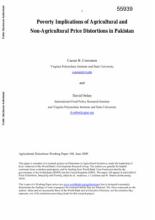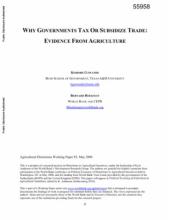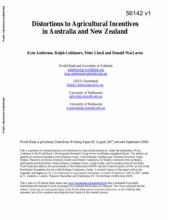/ library resources
Showing items 4402 through 4410 of 4457.This paper uses new data on agricultural policy interventions to examine the political economy of agricultural trade policies in Sub-Saharan Africa.
This chapter begins with a brief summary of the long history of national distortions to agricultural markets. It then outlines the methodology used to generate annual indicators of the extent of government interventions in markets, details of which are provided in Anderson and appendix A.
This paper addresses the potential effects of world agricultural trade liberalization on poverty and regional income distribution in Brazil, using an inter-regional applied general equilibrium (AGE) and a micro-simulation model of Brazil tailored for income distribution and poverty analysis by us
This paper describes agricultural policy choices and tests some predictions of political economy theories.
Although Mozambique has considerable agricultural potential, rural poverty remains extremely high. This paper examines the extent to which global and domestic price distortions affect agricultural production and national poverty.
Using recent estimates of industry assistance rates, the effects of trade liberalization in the rest of the world and in Pakistan alone are analyzed using a global and a Pakistan computable general equilibrium (CGE) model under two tax replacement schemes: a direct income tax and an indirect tax
This paper empirically explores the political-economic determinants of why governments choose to tax or subsidize trade in agriculture. The authors use a new data set on nominal rates of assistance (NRA) across a number of commodities spanning the last five decades for 64 countries.
The report seeks to analyze what has been learned about how agricultural interventions influence nutrition outcomes in low-and middle-income countries, focusing on the target populations of the millennium development goals-people living on less than a dollar a day.
In 1990, Australia and New Zealand were ranked around 25th and 37th in terms of Gross National Product (GNP) per capita, having been the highest-income countries in the world one hundred years earlier.
Paginação
Land Library Search
Through our robust search engine, you can search for any item of the over 73,000 highly curated resources in the Land Library.
If you would like to find an overview of what is possible, feel free to peruse the Search Guide.

